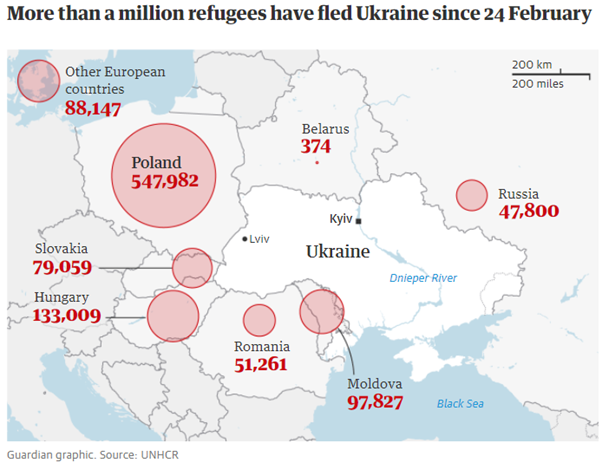This is taken from a Daily Telegraph article (with paragraphs removed to save space).
Shrinkflation
is speeding up at an alarming rate
The Office for National Statistics says food price inflation has risen to 15 per cent. Er, have they been to a supermarket lately? I reckon the cost of basic foodstuffs is up nearer 20 per cent.
And shocking prices are not the only issue. I picked up some dried mango, my daughter’s favourite, to put in the basket yesterday and I thought there must be a hole in the packet because it contained so few pieces. Nope. Same size packaging, half the content. They call it “shrinkflation” – packaging and price stay the same size while contents diminish – and it’s been happening for years. But, if I’m not mistaken, shrinkflation is now speeding up at an alarming rate.
The metric system makes it a lot easier for
manufacturers to con consumers – 1lb down to 14oz would be picked up quickly,
but 454g to 425g is less noticeable. So, Sensodyne toothpaste is the same
price, but tubes are now 75ml instead of 100ml. That’s a 25 per cent price
increase. What used to be a 2kg packet of Birds Eye frozen peas has gone
down, first to 1.5kg, then 1.3kg and is now a 1.2kg packet.
SEVERAL FOOD ESSENTIALS HAVE SOARED IN PRICE
Price changes between September 2021 and September 2022
Questions
Q1) Is there any contradiction in the first paragraph?
The Office for National Statistics says food price inflation has risen to 15 per cent. Er, have they been to a supermarket lately? I reckon the cost of basic foodstuffs is up nearer 20 per cent.
Q2) What is the percentage change from 1lb to 14oz?
The metric system makes it a lot easier for manufacturers to con consumers – 1lb down to 14oz would be picked up quickly, but 454g to 425g is less noticeable.
Q3) What is the percentage change from 454g to 425g?
Q4) Why has the author chosen 454g?
Q5) Convert 425g to ounces.
Q6) What error has the author made regarding the weights? Correct the sentence.
Q7) What is the error in the toothpaste example? Correct the sentence.
So, Sensodyne toothpaste is the same price, but tubes are now 75ml instead of 100ml. That’s a 25 per cent price increase.
Q8) Calculate the missing figures in the table. Then compare them to the original version, shown below in the answers. Comments?
Q9) Birds Eye frozen peas are mentioned. Here they are, as available at Tesco’s. Which one is the best value?
.
.
.
.
.
.
Answers
A1) Is there any contradiction in the first paragraph?
No. “Food price inflation” could have risen to 15% while the “cost of basic foodstuffs” has increased by more than this, because food price inflation includes more than just the basics.
(And presumably the government’s Office for National Statistics is a more reliable source than Someone Who Goes to a Supermarket.)
A2) What is the percentage change from 1lb to 14oz?
1 lb = 16oz. So the percentage change is 2/16 = 12.5%
A3) What is the percentage change from 454g to 425g?
The percentage change is 29/454 = 6.4%
So it is obvious that the first change would be more noticeable, because it is so much bigger!
Q4) Why has the author chosen 454g?
454g is equivalent to 1 lb.
A5) Convert 425g to ounces.
425/454 x 16 = 14.97797. So it is 15 ounces.
A6) What error has the author made regarding the weights? Correct the sentence.
They have tried to say that the same weight reduction is easier to spot in the Imperial system than in the metric system. Unfortunately, they have gone from 16oz to 14oz in Imperial units and 16oz to 15oz when converted to metric units. Oops!
It could be corrected to be either of these:
* 1lb down to 15oz would be picked up quickly, but 454g to 425g is less noticeable.
* 1lb down to 14oz would be picked up quickly, but 454g to 397g is less noticeable.
A7) What is the error in the toothpaste example? Correct the sentence.
The volume of toothpaste has gone down by 25%, but that is not the same as a 25% increase in price.
To find the equivalent price increase, we need to find out what percentage of the new volume we would need to buy to get the original amount of toothpaste. We would need 1 and 1/3 tubes of 75ml toothpaste to make 100ml. That is the same as a 33 1/3 % increase in price.
It could be corrected to be:
So, Sensodyne toothpaste is the same price, but
tubes are now 75ml instead of 100ml. That’s a 33 per cent price increase.
A8) Calculate the missing figures in the table. Then compare them to the original version, below. Comments?
You will not have got exactly the same numbers. Nothing is more than a penny away from what you expect, though, so anything further away than this has an error.
What is going on with the sugar and the rice? Presumably the prices are not exact but have been rounded. How it this possible? They must be average costs across lots of different shops.
A9) Birds Eye frozen peas are mentioned. Here they are, as available at Tesco’s. Which one is the best value?
Working out the cost per kg, or the cost per g is a good way to do this.
Strangely, it’s not the largest packet!












